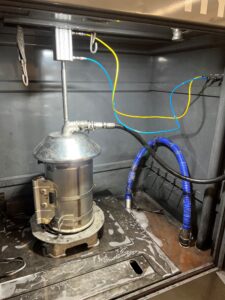How to clean your diesel particulate filter (DPF)
If you search online for ‘how to clean your diesel particulate filter’, Google will greet you with a range of options, including chemical cleans, mobile cleans and eco cleans to name but a few.
While some options might be cheaper or more convenient than others, making the wrong decision can end up costing you thousands in the long run.
So, before you agree to a DPF clean with a local garage or a mobile cleaning service, here are a few guiding principles to help you make the right decision.
What’s the purpose of a DPF?
A DPF protects the environment by capturing harming matter from your vehicle’s exhaust system. To keep your DPF performing correctly, it should be regularly maintained and cleaned with the regenerative functionality to burn off trapped matter.
What causes a DPF to block?
A DPF can block for multiple reasons, all of which cause potential engine damage, reduced vehicle performance and increased fuel consumption. Here are the usual causes for a blocked DPF:
- regular short journeys
- improper servicing and maintenance
- using the wrong type of oil
- using low-quality fuel
- running your vehicle on low fuel
If you typically drive short journeys, your DPF has fewer opportunities to perform passive regeneration. This process starts when a vehicle runs for 30 minutes or more at a moderate speed, allowing exhaust temperatures to burn off excess soot trapped in your DPF.
How to protect the performance of your DPF
Like anything, the best way to protect the performance of a component is with proper maintenance. Your DPF will typically need cleaning once a year or every 75,000 miles, whichever comes first. You should also be mindful of the fuel quality used in your vehicle, as well as an awareness of your general driving patterns.
Vehicles fitted with a DPF should also have an oil change every 6,000 miles (if you typically drive short journeys) or 10,000 miles (if you typically drive long journeys). This is because the regenerative cleaning process with DPFs can accelerate the contamination of oil, shortening the lifespan of your engine.
Can you permanently remove a DPF from your vehicle?
It is illegal to permanently remove the DPF from your vehicle. Failure to have a properly functioning DPF will result in an automatic MOT failure, with a bill to supply and refit a replacement costing as much as £3,000 +VAT.
How to clean your DPF
A blocked DPF can be cleaned and restored, but it should be done in the correct way. Sadly, we have a lot of customers who have previously had their DPF chemical cleaned – often by a we-come-to-you cleaning company.
Opting for a chemical clean can potentially damage the temperature sensor ports, resulting in a DPF replacement costing thousands. What’s more, a chemical clean can often leave soot in components, meaning your DPF will block up again in a shorter time span.
The smarter way to clean your DPF is with hydrodynamic cleaning technology. It uses no harmful chemicals and cleans up to 98% of soot from your filter with every flush.



It also means you’re playing your part to protect the planet by lowering the demand for new parts to be manufactured. Plus, it’s a cheaper option to buying a new DPF with drop-in cleans costing as little as £200 +VAT.
Alternatively, if we diagnose and issue you with your DPF during an MOT, we can remove, clean and refit your DPF, as well as reprogramme your systems for as little as £500 +VAT. Pricing is calculated on make and model of vehicle.
Book your DPF clean
To learn more about our hydrodynamic DPF cleaning technology or to book your clean, call 01273 584 987.